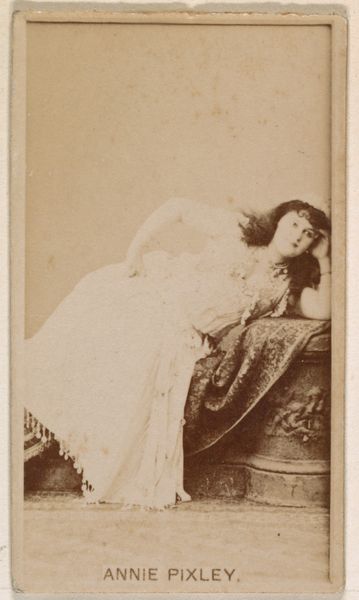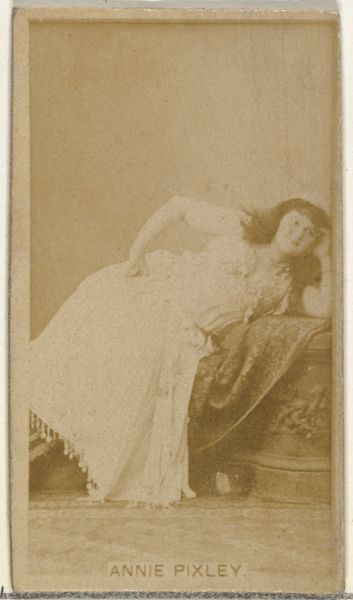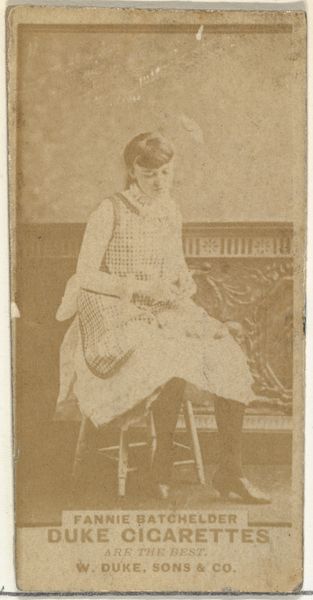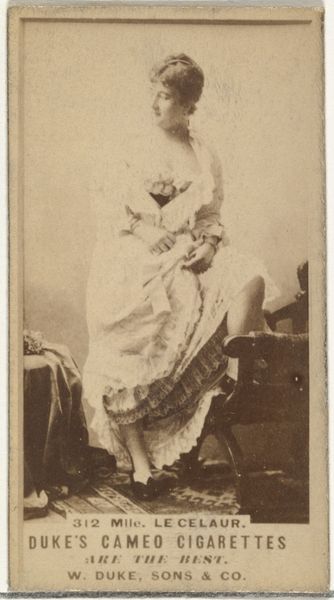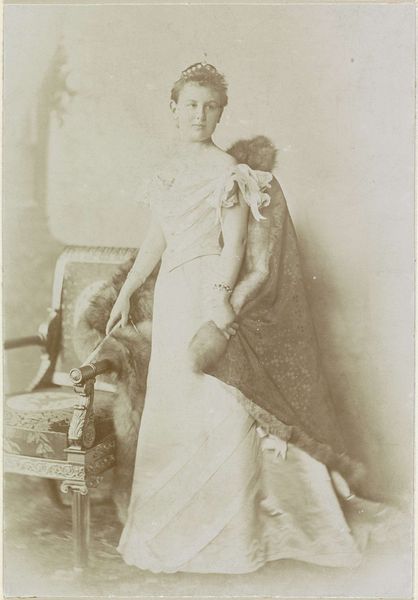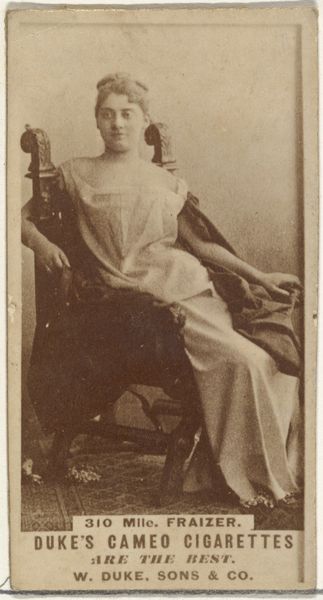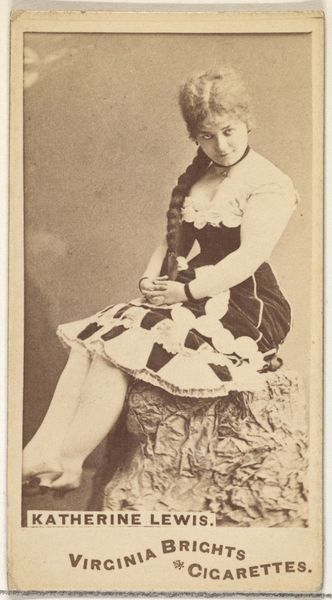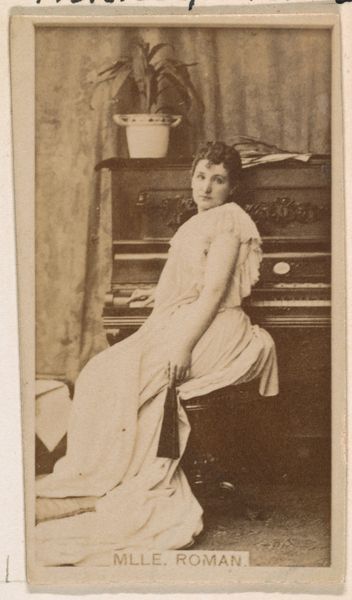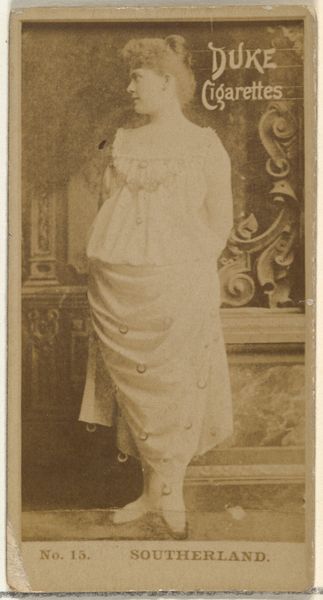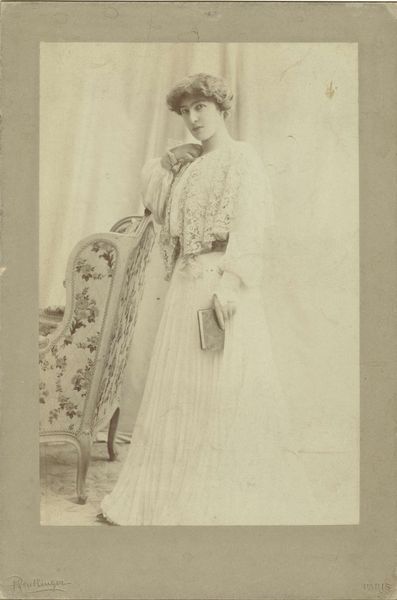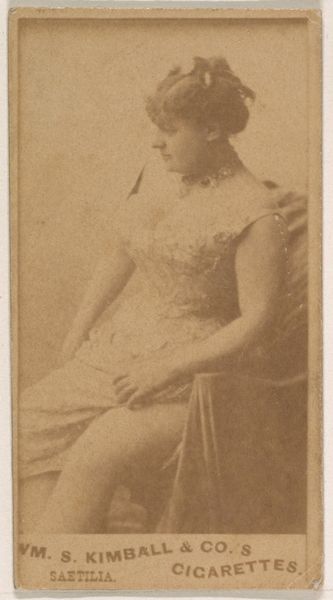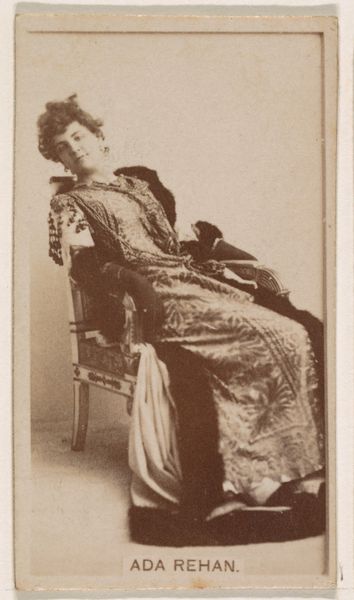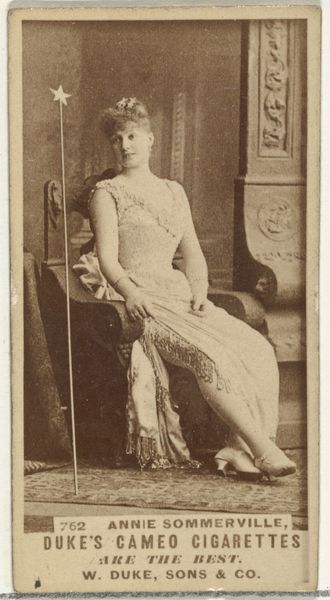
photography, gelatin-silver-print
#
portrait
#
pictorialism
#
archive photography
#
photography
#
historical photography
#
gelatin-silver-print
#
19th century
#
genre-painting
Dimensions: image: 18.7 x 13.8 cm (7 3/8 x 5 7/16 in.) mount: 31.5 x 19.6 cm (12 3/8 x 7 11/16 in.)
Copyright: National Gallery of Art: CC0 1.0
Curator: What an evocative scene. We're looking at Clarence H. White's gelatin-silver print, "The Window Seat," created in 1899. Editor: My first impression is tranquility, tinged with perhaps a whisper of melancholy. The light is beautifully soft, almost dreamlike. Curator: White was a master of pictorialism, a movement that aimed to elevate photography to the level of fine art. Notice how he manipulates the photographic process to achieve painterly effects—soft focus, tonal subtleties… Editor: It feels less like a snapshot and more like a memory. The young woman, she's gazing out of frame, lost in thought. Is she waiting, perhaps? Or simply contemplating? Her dress, that floral pattern…it speaks to a quieter era. Curator: Indeed. And the composition, the way she's nestled into that window seat, emphasizes a sense of enclosure and interiority. Consider the lines—the verticals of the window frame contrasting with the diagonal flow of her dress. Editor: Semiotically speaking, window suggests possibility but also acts as a barrier. And the book she holds... It makes you wonder, doesn’t it? What stories is she holding in her hands, and how might they mirror or diverge from her own? Perhaps she identifies herself with someone she finds in the pages she is clutching? Curator: It could be read so many ways. What captivates me is its ambiguity. White offers us a glimpse into a private moment, but leaves the narrative open-ended. And this makes the viewing of "The Window Seat" all the more poignant, all the more profound. Editor: It's interesting that in today's frenetic world, we find beauty in the quietude of a turn-of-the-century photograph. We find solace here. Thanks to Clarence H. White, a simple scene turns sublime, revealing that peace might be an attainable human condition. Curator: Yes, an evocative visual poem of sorts. Let us step back now and permit other visitors their private moments in which to ponder White’s legacy.
Comments
No comments
Be the first to comment and join the conversation on the ultimate creative platform.
